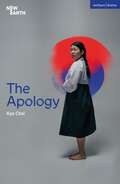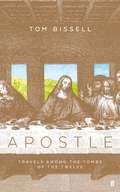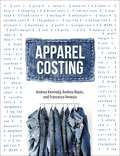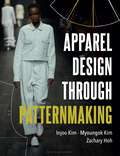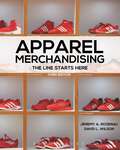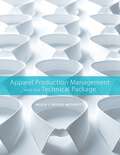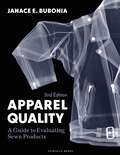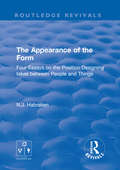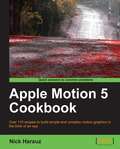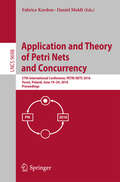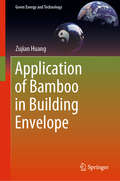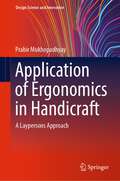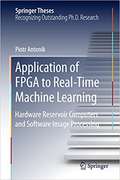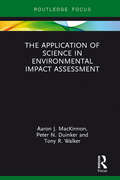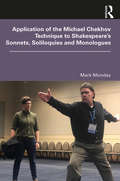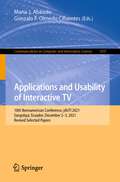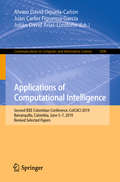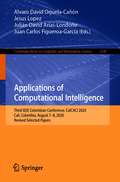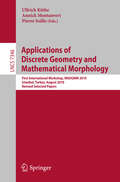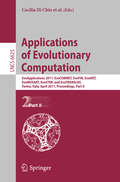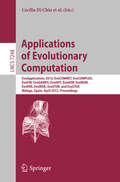- Table View
- List View
The Apology (Modern Plays)
by Kyo ChoiI exist now. Don't tell me that I didn't existbefore.How should a nation apologise for the crimes of its past?Seoul, 1991. She kept her silence for over forty years. Then Sun-Hee spoke out, igniting a fire that burns to this day. Yuna is about to uncover a shameful family secret. Priyanka, the first United Nations investigator into Violence Against Women, probes the harrowing circumstances of the WWII “comfort women”. Three women's lives intertwine as they speak truth to power and confront the atrocity of Japanese military sexual slavery during wartime.Based on true accounts by survivors and historical documents, The Apology is a play about what it takes to forgive. This edition is published to coincide with the world premiere at the Arcola Theatre, UK, in September 2022.
Apostle: Travels Among the Tombs of the Twelve
by Tom BissellPeter, Matthew, Thomas, John :Who were these men and what was their relationship to Jesus? Tom Bissell gives us rich and deeply informed answers to those ancient questions.Written with warmth, humour, and a rare acumen, Apostle is a brilliant and exhaustive synthesis of travel writing, centuries of biblical history, and a deep lifelong relationship with Christianity. Bissell explores not just who these renowned and pious men were (and weren't), but how their identities have taken shape over two millennia.Bissell, in his search for this elusive set of truths, has traveled the world, visiting holy sites from Rome and Jerusalem to Turkey, India, and Kyrgyzstan, and he captures vividly the rich diversity of Christianity's global reach. Apostle is an unusual, erudite, and hilarious book, an intoxicating combination of religious, intellectual, and personal adventure.
Apparel Costing
by Andrea Kennedy Andrea Reyes Francesco VeneziaNewcomers to the fashion industry often base costings on the sum of a style's fabric, trims and labor-and to that they simply add their markup. However, every other activity of the business erodes that markup, and they find themselves with an unsustainable profit-or a loss. This guide will help you avoid these pitfalls to guarantee a sustainable profit. Apparel Costing details traditional and current costing methods for the fast-paced and e-commerce-focused fashion marketplace. You will learn industry-specific product/style costing that can be applied to garments produced both locally and globally. You'll also learn how to calculate line item percentages on indirect cost factors, such as factory sourcing, overhead, administration and product development. Key topics include: Target Market Pricing; Variable vs Fixed Costs; Direct vs Indirect Cost Factors; Cost-Based vs Value-Based Costing; Domestic vs International Production Costing; Effect of Sourcing on Costing; Sustainability in Costing; Fast Fashion vs. Slow Fashion
Apparel Costing
by Andrea Kennedy Andrea Reyes Francesco VeneziaNewcomers to the fashion industry often base costings on the sum of a style's fabric, trims and labor-and to that they simply add their markup. However, every other activity of the business erodes that markup, and they find themselves with an unsustainable profit-or a loss. This guide will help you avoid these pitfalls to guarantee a sustainable profit. Apparel Costing details traditional and current costing methods for the fast-paced and e-commerce-focused fashion marketplace. You will learn industry-specific product/style costing that can be applied to garments produced both locally and globally. You'll also learn how to calculate line item percentages on indirect cost factors, such as factory sourcing, overhead, administration and product development. Key topics include: Target Market Pricing; Variable vs Fixed Costs; Direct vs Indirect Cost Factors; Cost-Based vs Value-Based Costing; Domestic vs International Production Costing; Effect of Sourcing on Costing; Sustainability in Costing; Fast Fashion vs. Slow Fashion
Apparel Design through Patternmaking: - with STUDIO
by Injoo Kim Myoung Ok Kim Zachary HohApparel Design Through Patternmaking is a fresh design-oriented flat patternmaking text that gives fashion students a new perspective on patternmaking knowledge and skills they need to develop contemporary women's, men's, and children's wear. This book covers a comprehensive range of concepts in flat pattern drafting, such as fit, style, and design development, and the modular approach allows for flexible design options across age, gender, and size, as reflected in current fashion trends. 200 detailed principles address proper measurements; body shapes; dart manipulation; neckline, collar, and sleeve variations; fit issues and corrections; garment details; and more, all of which are easily visualized with hundreds of line drawings and photos. Reference size charts and a decimal conversion chart included in the Appendix make this text user-friendly for international students. Key Features: - 20 slopers, 30 foundations, and variations - 220 detailed principles of patternmaking - 100+ applied garment designs - A chapter on Cut & Sew stretch fabrics - Learning objectives with clear flat sketches in each chapter - A decimal conversion chart, reference size charts, and glossary of key terms STUDIO Features Include: - Watch videos that show the development process for customized sloper sets - Review concepts with flashcards of essential vocabulary - Practice with additional 1/2 scale slopers Instructor Resources Include: - Instructor's Guide provides suggestions for planning the course and using the text in the classroom, supplemental assignments, and lecture notes
Apparel Merchandising: The Line Starts Here
by Jeremy A. Rosenau David L. WilsonApparel Merchandising: The Line Starts Here analyzes the evolution and development of the merchandising function in branded apparel companies and retail private label apparel. It describes today's challenges for both apparel manufacturers and retailers in meeting the consumer's demands for the right products at the right prices - and at the right times. Approached from the perspective of the apparel product manager, Rosenau and Wilson cover men's and women's sportswear and activewear and children's wear in both domestic and international markets.The text follows the evolution of the merchandising function with emphasis on product development and production efficiency, highlighting the philosophies of industry executives and the effective integration of the merchandising, marketing, and manufacturing functions along the way. The third edition emphasizes the increased importance of retailer's private brands, explores how companies apply technology to all facets of product development and supply chain management, and addresses the impact of social media on both retailers and apparel manufacturers.
Apparel Production Management and the Technical Package
by Paula J. Myers-McDevittIn today's global apparel industry, garments that are designed domestically are often manufactured overseas. Apparel Production Management and the Technical Package is essential for fashion students and professionals who want to understand this growing trend in production and gain the skills necessary for this new universe of apparel manufacturing. The text provides an overview of production management and processes in the global marketplace and examines in detail the components of the technical package, or tech-pack--a series of forms that defines a garment's specifications and is critical to ensuring that a particular style is executed correctly and in the most cost- and time-efficient manner possible.Features -Diagrams of a production department's division of labor, costing components, and global sourcing structure -Discussion of the role of technology in production management, including PDM and PLM software -Examples of completed technical package sheets from actual apparel companies -Blank technical package sheets representing the standard of what is used across the apparel industry -Appendices containing basic body croquis, industrial sewing stitches, a button selector gauge, care labeling regulations, and blank templates from a standard tech-pack
Apparel Quality: A Guide to Evaluating Sewn Products - with STUDIO
by Janace E. BuboniaApparel Quality: A Guide to Evaluating Sewn Products, Second Edition is a user-friendly guide for evaluating apparel quality to ensure quality products that meet customer expectations. This book provides an overview of apparel production, emphasizing quality characteristics and cues, consumer influences, and motivations impacting purchasing decisions, and highlights the roles of product designers, manufacturers, merchandisers, testing laboratories, and retailers from product inception through the sale of goods. The text is highly illustrated to provide students with the tools needed to evaluate and critique quality elements in apparel and textile products skillfully. New to this Edition:- New fabric technology including e-textiles, sew bots, and automation- International common size equivalents to accompany U.S. size classifications by sex, height, and age- Sustainability considerations for raw materials, design development, and apparel production- Expanded international labeling and safety regulations and compliance for the United States, Canada, EU, and Japan Instructor Resources- The Instructor's Guide provides suggestions for planning the course and using the text in the classroom, including sample syllabi, in-class activities, lab activities, and projects.- The Test Bank includes sample test questions for each chapter- PowerPoint® presentations include images from the book and provide a framework for lecture and discussionInstructor's Resources may be accessed through www.fairchildbooks.com.STUDIO Features:- Study smarter with self-quizzes featuring scored results and personalized study tips- Review concepts with flashcards of essential vocabulary and image identification- Watch Videos that take you behind the scenes of factories and testing facilities, to see how concepts covered in the text are applied in the real world
The Appearance of the Form: Four Essays on the Position Designing takes between People and Things (Routledge Revivals)
by N.J. HabrakenOriginally published in 1985 this book explores, in four interwoven essays, the many ways human life and built form interact and the place that professional designing takes in this interaction. Together, the essays touch on a number of ideas: the idea that our position in space relative to the thing we are designing determines the methods we apply when designing it; the idea that designing is about making proposals, and is therefore a social act first of all; and the idea that agreements, consensus and above all conventions shape the act of designing things independent of their creative qualities.
The Appearance of the Form: Four Essays on the Position Designing takes between People and Things (Routledge Revivals)
by N.J. HabrakenOriginally published in 1985 this book explores, in four interwoven essays, the many ways human life and built form interact and the place that professional designing takes in this interaction. Together, the essays touch on a number of ideas: the idea that our position in space relative to the thing we are designing determines the methods we apply when designing it; the idea that designing is about making proposals, and is therefore a social act first of all; and the idea that agreements, consensus and above all conventions shape the act of designing things independent of their creative qualities.
Apple Motion 5 Cookbook
by Nick HarauzStep-by-step, practical recipes to build simple and complex Motion Graphics with Motion 5"Apple Motion 5 Cookbook" is designed for Final Cut Pro X video editors and Motion 5 users looking to gain more knowledge of how Motion works, and to get more of a җOW' factor in projects. It's also aimed at designers and motion designers alike, who are looking to build on their skillsets.
Application and Theory of Petri Nets and Concurrency: 37th International Conference, PETRI NETS 2016, Toruń, Poland, June 19-24, 2016. Proceedings (Lecture Notes in Computer Science #9698)
by Fabrice Kordon Daniel MoldtThis book constitutes the proceedings of the 37th International Conference on Application and Theory of Petri Nets and Concurrency, PETRI NETS 2016, held in Toruń, Poland, in June 2016. Petri Nets 2016 was co-located with the Application of Concurrency to System Design Conference, ACSD 2016.The 16 papers including 3 tool papers with 4 invited talks presented together in this volume were carefully reviewed and selected from 42 submissions. Papers presenting original research on application or theory of Petri nets, as well as contributions addressing topics relevant to the general field of distributed and concurrent systems are presented within this volume.
Application of Bamboo in Building Envelope (Green Energy and Technology)
by Zujian HuangThis book offers a comprehensive overview of the use of bamboo in building industry. It systematically demonstrates bamboo’s utility in terms of its properties, describing the material properties of typical industrial bamboo products, and discussing their performance evaluation and optimization as building components and in the creation of building envelopes. The book also includes examples of the high-value utilization of bamboo forest resources. Further, it examines how building performance may be affected by conditions such as climate. Including insights from material science, construction design, building physics and building climatology, the book also provides data obtained from technology and market status investigation, laboratory test and the computer simulation.This book appeals to scientists and professionals, as it introduces and tests various bamboo products, demonstrating the advantages and disadvantages for each one. The book is also a valuable resource for civil engineers and students interested in this unique plant material and its application in the building industry.
Application of Ergonomics in Handicraft: A Laypersons Approach (Design Science and Innovation)
by Prabir MukhopadhyayThis book is about the application of ergonomics in handicraft manufacturing and design keeping in mind the two sets of users, craftsmen and customers buying handicraft items. Written in an easy to understand language and in a story telling format. It requires no prior knowledge of the subject nor any knowledge of science or technology for using this book and applying it in handicraft manufacturing and design. The book starts with an overview of the application of ergonomics in different aspects of craft manufacturing, touching upon tools, space, process and then moves into the aspects of ergonomics of craft packaging and displaying. Alongside the book also explains the ergonomic aspects of designing of handicraft products keeping the users of the products in mind, their dimensions, capacity, limitations etc. Each chapter starts with an "overview" and ends with "key points" and exercises to help the readers in applying the principles of ergonomics in handicraft. The last chapter is dedicated to exercises in different areas of handicraft and the ergonomic applications for them, followed by ergonomic design directions to solve them.
Application of FPGA to Real‐Time Machine Learning: Hardware Reservoir Computers and Software Image Processing (Springer Theses)
by Piotr AntonikThis book lies at the interface of machine learning – a subfield of computer science that develops algorithms for challenging tasks such as shape or image recognition, where traditional algorithms fail – and photonics – the physical science of light, which underlies many of the optical communications technologies used in our information society. It provides a thorough introduction to reservoir computing and field-programmable gate arrays (FPGAs).Recently, photonic implementations of reservoir computing (a machine learning algorithm based on artificial neural networks) have made a breakthrough in optical computing possible. In this book, the author pushes the performance of these systems significantly beyond what was achieved before. By interfacing a photonic reservoir computer with a high-speed electronic device (an FPGA), the author successfully interacts with the reservoir computer in real time, allowing him to considerably expand its capabilities and range of possible applications. Furthermore, the author draws on his expertise in machine learning and FPGA programming to make progress on a very different problem, namely the real-time image analysis of optical coherence tomography for atherosclerotic arteries.
The Application of Science in Environmental Impact Assessment (Routledge Focus on Environment and Sustainability)
by Aaron J. MacKinnon Peter N. Duinker Tony R. WalkerThis book charts the history of the application of science in environmental impact assessment (EIA) and provides a conceptual and technical overview of scientific developments associated with EIA since its inception in the early 1970s. The Application of Science in Environmental Impact Assessment begins by defining an appropriate role for science in EIA. From here it goes on to reflect more closely on empirical and deductive biophysical sciences as they relate to well-known stages of the generic EIA process and explores whether scientific theory and practice are at their vanguard in EIA and related applications. Throughout the book the authors reflect on biophysical science as it applies to stages of the EIA process and also consider debates surrounding the role of science as it relates to political and administrative dimensions of EIA. Based on this review, the book concludes that improvements to the quality of science in EIA will rely on the adoption of stronger participatory and collaborative working arrangements. Covering key topics including foundational scientific guidance materials; frameworks for implementing science amid conflict and uncertainty; and emerging ecological concepts, this book will be of great interest to students, scholars and practitioners of EIA.
The Application of Science in Environmental Impact Assessment (Routledge Focus on Environment and Sustainability)
by Aaron J. MacKinnon Peter N. Duinker Tony R. WalkerThis book charts the history of the application of science in environmental impact assessment (EIA) and provides a conceptual and technical overview of scientific developments associated with EIA since its inception in the early 1970s. The Application of Science in Environmental Impact Assessment begins by defining an appropriate role for science in EIA. From here it goes on to reflect more closely on empirical and deductive biophysical sciences as they relate to well-known stages of the generic EIA process and explores whether scientific theory and practice are at their vanguard in EIA and related applications. Throughout the book the authors reflect on biophysical science as it applies to stages of the EIA process and also consider debates surrounding the role of science as it relates to political and administrative dimensions of EIA. Based on this review, the book concludes that improvements to the quality of science in EIA will rely on the adoption of stronger participatory and collaborative working arrangements. Covering key topics including foundational scientific guidance materials; frameworks for implementing science amid conflict and uncertainty; and emerging ecological concepts, this book will be of great interest to students, scholars and practitioners of EIA.
Application of the Michael Chekhov Technique to Shakespeare’s Sonnets, Soliloquies and Monologues
by Mark MondayApplication of the Michael Chekhov Technique to Shakespeare’s Sonnets, Soliloquies, and Monologues illustrates how to apply the Michael Chekhov Technique, through exercises and rehearsal techniques, to a wide range of Shakespeare’s works. The book begins with a comprehensive chapter on the definitions of the various aspects of the Technique, followed by five chapters covering Shakespeare’s sonnets, comedies, tragedies, histories, and romances. This volume offers a very specific path, via Michael Chekhov, on how to put theory into practice and bring one’s own artistic life into the work of Shakespeare. Offering a wide range of pieces that can be used as audition material, Application of the Michael Chekhov Technique to Shakespeare’s Sonnets, Soliloquies, and Monologues is an excellent resource for acting teachers, directors, and actors specializing in the work of William Shakespeare. The book also includes access to a video on Psychological Gesture to facilitate the application of this acting tool to Shakespeare’s scenes.
Application of the Michael Chekhov Technique to Shakespeare’s Sonnets, Soliloquies and Monologues
by Mark MondayApplication of the Michael Chekhov Technique to Shakespeare’s Sonnets, Soliloquies, and Monologues illustrates how to apply the Michael Chekhov Technique, through exercises and rehearsal techniques, to a wide range of Shakespeare’s works. The book begins with a comprehensive chapter on the definitions of the various aspects of the Technique, followed by five chapters covering Shakespeare’s sonnets, comedies, tragedies, histories, and romances. This volume offers a very specific path, via Michael Chekhov, on how to put theory into practice and bring one’s own artistic life into the work of Shakespeare. Offering a wide range of pieces that can be used as audition material, Application of the Michael Chekhov Technique to Shakespeare’s Sonnets, Soliloquies, and Monologues is an excellent resource for acting teachers, directors, and actors specializing in the work of William Shakespeare. The book also includes access to a video on Psychological Gesture to facilitate the application of this acting tool to Shakespeare’s scenes.
Applications and Usability of Interactive TV: 10th Iberoamerican Conference, jAUTI 2021, Sangolquí, Ecuador, December 2–3, 2021, Revised Selected Papers (Communications in Computer and Information Science #1597)
by María J. Abásolo Gonzalo F. Olmedo CifuentesThis book constitutes thoroughly refereed and revised selected papers from the 10th Iberoamerican Conference on Applications and Usability of Interactive TV, jAUTI 2021, held in Sangolqui, Ecuador, during December 2–3, 2021.The 9 full papers included in this book were carefully reviewed and selected from 25 submissions. They were organized in topical sections as follows: Usability and UX; interaction techniques and accesibility; and technologies, services, and applications for interactive digital TV.
Applications of Computational Intelligence: Second IEEE Colombian Conference, ColCACI 2019, Barranquilla, Colombia, June 5-7, 2019, Revised Selected Papers (Communications in Computer and Information Science #1096)
by Alvaro David Orjuela-Cañón Juan Carlos Figueroa-García Julián David Arias-LondoñoThis book constitutes the thoroughly refereed proceedings of the Second IEEE Colombian Conference, ColCACI 2019, held in Barranquilla, Colombia, in June 2019. The 21 full papers presented were carefully reviewed and selected from 59 submissions. The papers cover such topics as video processing; biomedical systems; image processing, etc.
Applications of Computational Intelligence: Third IEEE Colombian Conference, ColCACI 2020, Cali, Colombia, August 7-8, 2020, Revised Selected Papers (Communications in Computer and Information Science #1346)
by Alvaro David Orjuela-Cañón Jesus Lopez Julián David Arias-Londoño Juan Carlos Figueroa-GarcíaThis book constitutes revised and extended selected papers of the Third IEEE Colombian Conference, ColCACI 2020, held in Cali, Colombia, August 2020. Due to the COVID-19 pandemic the conference was held online. The12 full papers presented were carefully reviewed and selected from 65 submissions. The papers are organized in topical sections on earth sciences applications; biomedical and power applications; alternative proposals and its applications.
Applications of Discrete Geometry and Mathematical Morphology: First International Workshop, WADGMM 2010, Istanbul, Turkey, August 22, 2010, Revised Selected Papers (Lecture Notes in Computer Science #7346)
by Ullrich Köthe Annick Montanvert Pierre SoilleThis book constitutes the refereed proceedings of the first Workshop on Applications of Discrete Geometry and Mathematical Morphology, WADGMM 2010, held at the International Conference on Pattern Recognition in Istanbul, Turkey, in August 2010. The 11 revised full papers presented were carefully reviewed and selected from 25 submissions. The book was specifically designed to promote interchange and collaboration between experts in discrete geometry/mathematical morphology and potential users of these methods from other fields of image analysis and pattern recognition.
Applications of Evolutionary Computation: EvoApplications 2011: EvoCOMNET, EvoFIN, EvoHOT, EvoMUSART, EvoSTIM, and EvoTRANSLOG, Torino, Italy, April 27-29, 2011, Proceedings, Part II (Lecture Notes in Computer Science #6625)
by Cecilia Di ChioThis book constitutes the refereed proceedings of the International Conference on the Applications of Evolutionary Computation, EvoApplications 2011, held in Torino, Italy, in April 2011 colocated with the Evo* 2011 events. Thanks to the large number of submissions received, the proceedings for EvoApplications 2011 are divided across two volumes (LNCS 6624 and 6625). The present volume contains contributions for EvoCOMNET, EvoFIN, EvoIHOT, EvoMUSART, EvoSTIM, and EvoTRANSLOC. The 51 revised full papers presented were carefully reviewed and selected from numerous submissions. This volume presents an overview about the latest research in EC. Areas where evolutionary computation techniques have been applied range from telecommunication networks to complex systems, finance and economics, games, image analysis, evolutionary music and art, parameter optimization, scheduling, and logistics. These papers may provide guidelines to help new researchers tackling their own problem using EC.
Applications of Evolutionary Computation: EvoApplications 2012: EvoCOMNET, EvoCOMPLEX, EvoFIN, EvoGAMES, EvoHOT, EvoIASP, EvoNUM, EvoPAR, EvoRISK, EvoSTIM, and EvoSTOC, Málaga, Spain, April 11-13, 2012, Proceedings (Lecture Notes in Computer Science #7248)
by Cecilia Di Chio Alexandros Agapitos Stefano Cagnoni Carlos Cotta Francisco Fernández De Vega Gianni A. Di Caro Rolf Drechsler Anikó Ekárt Anna I. Esparcia-Alcázar Muddassar Farooq W. B. Langdon Juan J. Merelo-Guervós Mike Preuss Hendrik Richter Sara Silva Anabela Simões Giovanni Squillero Ernesto Tarantino Andrea Tettamanzi Julian Togelius Neil Urquhart Sima Uyar Georgios N. YannakakisThis book constitutes the refereed proceedings of the International Conference on the Applications of Evolutionary Computation, EvoApplications 2012, held in Málaga, Spain, in April 2012, colocated with the Evo* 2012 events EuroGP, EvoCOP, EvoBIO, and EvoMUSART. The 54 revised full papers presented were carefully reviewed and selected from 90 submissions. EvoApplications 2012 consisted of the following 11 tracks: EvoCOMNET (nature-inspired techniques for telecommunication networks and other parrallel and distributed systems), EvoCOMPLEX (algorithms and complex systems), EvoFIN (evolutionary and natural computation in finance and economics), EvoGAMES (bio-inspired algorithms in games), EvoHOT (bio-inspired heuristics for design automation), EvoIASP (evolutionary computation in image analysis and signal processing), EvoNUM (bio-inspired algorithms for continuous parameter optimization), EvoPAR (parallel implementation of evolutionary algorithms), EvoRISK (computational intelligence for risk management, security and defense applications), EvoSTIM (nature-inspired techniques in scheduling, planning, and timetabling), and EvoSTOC (evolutionary algorithms in stochastic and dynamic environments).
